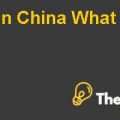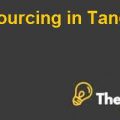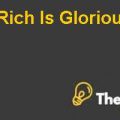
THE UNIVERSITY OF NOTRE DAME ENDOWMENT
Exit Strategy from Illiquid Investments and Alternative Positions
Illiquid Investments are those investments, which cannot be easily converted to cash, so in times of market instability it may be difficult to sell illiquid assets and it would be hard to find willing buyers for which asking prices of those investments will need to be discounted to draw attention for potential buyers so as to sell them.
The asset allocation of Norte Dame in 2008 with respect to illiquid investments was 22.5% private equity and 15% long-term along with short-term equities, which resulted in a total of 37.5% illiquid investments of the whole investment portfolio which was equal to the level of unfunded commitments i.e. 37%. To make an exit from illiquid investments and to reduce the level of unfunded commitments, managers should search for provisions that permit them to slow the payment of reclamation returns in order to increase short-term cash flows.
One of the provisions that can slow down withdrawal is a lock-up, where hedge funds will have a period from beginning financing over which no withdrawal is allowed. This period is for the most part somewhere around one or two years with four years at maximum and acts as a restriction against withdrawals. To go around this limitation, the best way is to get manager’s approval. Another constraint on withdrawals is known as a gate, which permits a manager to limit recoveries over a certain rate of the investment, and can be used to make withdrawals at that limit as an exit strategy. Side pockets are a system whereby illiquid investments that can't be valued are set aside until the security is sold or may be valued; these can be used to recover out of the fund and the manager is not needed to pay pro rata portion of the side pocket until it is sold or may be effectively valued.
Exit strategies for private equity include Initial Public Offering (IPO), under this method the investor will be able to realize the highest return on investment. Another exit route used is trade sale in which shares held by the investor are sold to a trade buyer. As this method provides a complete and immediate exit from the investment, hence, it is favored by private equity providers. Secondary sale is also used as an exit strategy in which shares held by the private investors are sold to another private equity firm.
Alternate positions for investments can be considered as per potential investments in Exhibit 1, instead of investing in illiquid assets such as private equity and hedge fund, investments can be made in U.S. equity with monthly liquidity, U.S. high yield with daily liquidity and real assets including real estate as well as timber, there is also a new type of “funds of hedge funds” in mutual fund form, in which there is no redemption restrictions imposed and this investment will also be in line with the endowment model of investing.
Proposed Management Incentives
Malpass and his team were looking to adopt the policy for the management incentives that could benefit both the management and the Notre Dame Endowment. For this particular reason, they adopted the Claw-back feature that would benefit them when there was crisis in the economy; which reduced the Endowment value. Claw-back feature is an incentive program, which is used in the financial firms where firms are managing the highly risk associated assets and funding. Malpass and his team were sure of the Claw-back that it would create the opportunity under which all the incentives given to the management would be returned back to the Notre Dame Endowment and doing this would also secure the Endowment fund under prevailing crisis.
The portfolio managers assess different incentive programs, which are given in the Appendices under Exhibit 1. The optimal incentive structure from these incentive programs for the public equity is the US Long/Short incentive program in which the investment gains the net annualized return about 11-13% by using hedge fund with lock-up of 1 year, 3 year and 5 years. By using this incentive program, the management could not withdraw the fund before maturity. In this the investment, fund would get the 1.5% annual management fees and 20% all net gains on investment in portfolio on 1 year lock-up, 18% all net gains on investment in portfolio on 3 year lock-up and 15% all net gains on 5 year lock-up. Hurdle rate could also be allied on this incentive at variable rate. This incentive program ..................................
This is just a sample partial case solution. Please place the order on the website to order your own originally done case solution.
Fund investment model, which was based on the creation of high risk-adjusted performance through diversification, a long time horizon, a first-class outside managers and illiquid investments, served as Notre Dame and other major universities and in the last few decades. Scott Malpass, Chief Investment Officer of Notre Dame, was convinced that it was a successful way to invest in effective implementation, but it also saw a top university endowments have 25% to 35% reduction in value of the portfolio in the second half of 2008, investment income from the gutted past few years. Notre Dame had weathered the crisis relatively well, but there are a few key questions Malpass had to go. If Notre Dame continue to make illiquid investments in a growing unfunded liability in relation to liquidity? Was adequate compensation for the illiquidity of these types of investments? As a manager of choice, how could investment Notre Dame team continue to find the best managers to create alpha? The extent to which performance of managers in times of crisis to predict future results in other parts of the economic cycle? As a long-time industry to the contract between the clients and managers to change in the future? Was there an opportunity for customers to negotiate more favorable terms? These issues are to be seen in the context of protecting the operating budget of the University and support the organization's mission.
To enhance their effectiveness, color cases should be printed in color. "Hide
by Andre F. Perold, Paul Buser Source: Harvard Business School 20 pages. Publication Date: October 15, 2009. Prod. #: 210007-PDF-ENG











